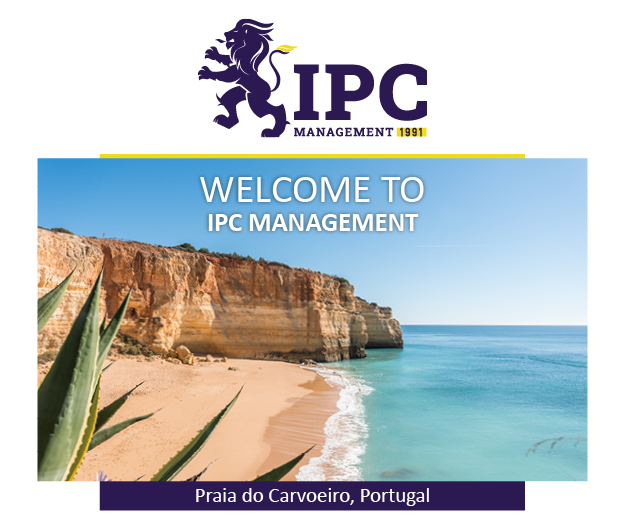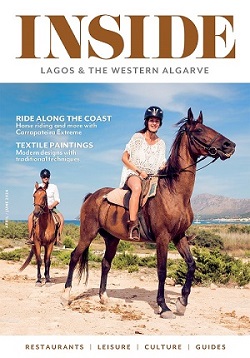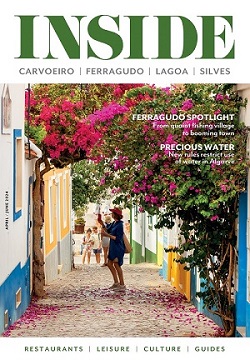As Flamingos make their return to the Algarve, wildlife Photographer Craig Rogers tells us more about this peculiar animal
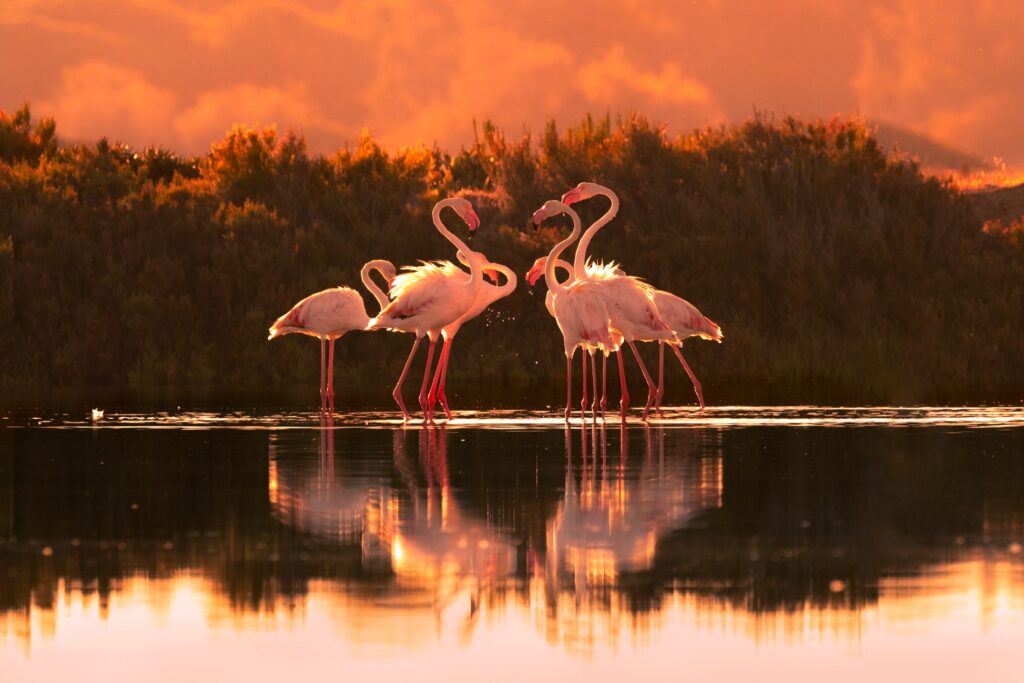
– April 7, 2022
We often associate Flamingos with warm tropical climates, so it may surprise you that here in the Algarve, winter is the best time to view these odd but beautiful birds in the coastal wetlands.
To be precise, the species of Flamingo found here in Portugal is the Greater Flamingo which although very closely related, is not the completely bright pink we associate with the American Flamingo. The Greater Flamingo starts off life very plain looking with no colouring. The legs are dark, and the plumage has no colour. It can take up to three years before the pink colouring appears and this is due to the amount of carotenoid pigments in their diet. In adult life, the legs are pink and their overall plumage has a slight pink tinge with deep-pink areas on their wings.
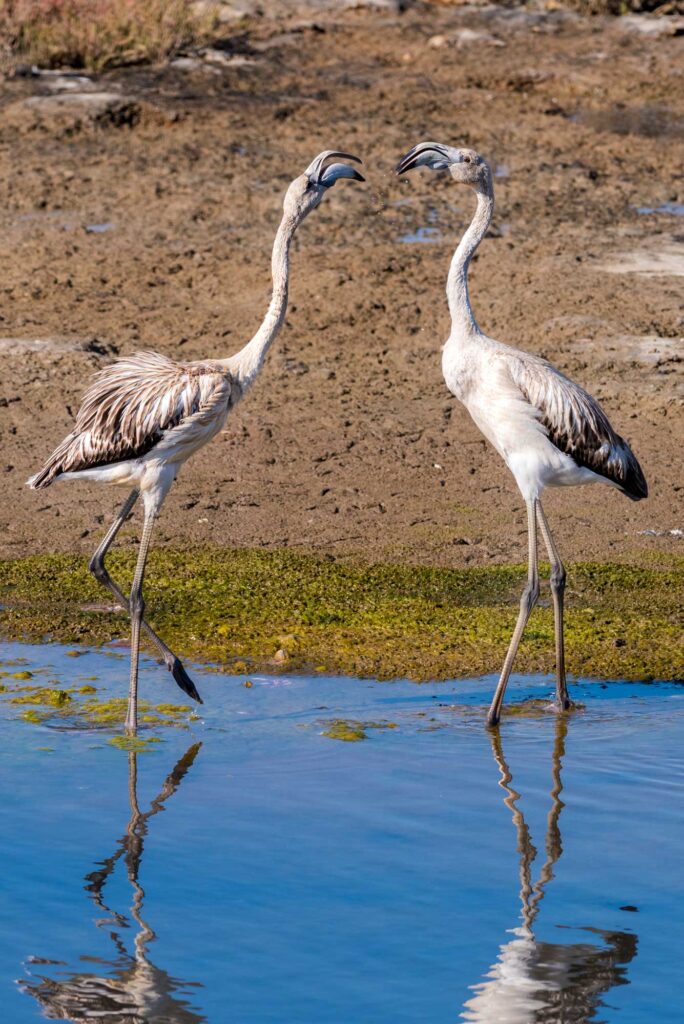
The beaks also turn pink with a black tip. In flight, contrasting black wing feathers can be seen. Both sexes are almost identical with males usually being slightly larger.

As the name suggests, they are the largest species of Flamingos, reaching up to 150cm tall (sometimes more) and weighing up to 4kg. Although not migratory, the breeding adults usually return to Spain, Italy, Turkey, France and Northern Africa to nest and breed. I mention “usually”, because last year we witnessed the rare occurrence of breeding in the wetland areas around Castro Marim and Vila Real de Santo António. There are many speculations as to why this occurred from the Covid pandemic (less humans) to drought in Spain. We await their decision to stay or leave this year.
Whilst on the subject of breeding, did you know that breeding adults apply make-up to appear more attractive to the opposite sex (even though adults usually bond for life). They have the ability to secrete preening oil from their Uropygial Gland which is found at the base of tail feathers in most birds. The oil contains the same carotenoid pigment which turns their feathers pink and by rubbing the oil on their feathers it enhances the colouring.
Have you ever heard the noise a Flamingo creates? Think Goose and you are close, large flocks can sound like a poultry farm and when squabbles occur it can be a noisy experience.

Flamingos eat upside down, their webbed feet disturb the mud, stirring up food before placing their head in the water and sucking the water into their strange-looking beaks, filtering out food containing seafood, algae and seeds and rejecting the water.
You can find Greater Flamingos in many of the coastal wetland areas across the whole width of the Algarve. My recommended areas are Ludo to the West of Faro airport, Salgados near Praia Grande de Pêra and the north-eastern area of the Alvor Estuary.
When crossing the Arade River on either the N125 or A22 near Portimão, you can often spot flocks feeding at low tide.
Being a large bird, photographing Greater Flamingos is relatively easy not requiring huge telephoto/zoom lenses. Although they do not like being approached, sitting still and waiting for them to approach is often the best method if your camera lens doesn’t quite reach. As with most subjects, photographing them in the early or late sunlight will produce better colours.
Text & Photos by Craig Rogers
Craig Rogers, a Wildlife and Nature photographer from Wales now living in the Algarve providing Photography Workshops, more information, photographs, and blog can be found on his website at www.craigrogers.photography.



